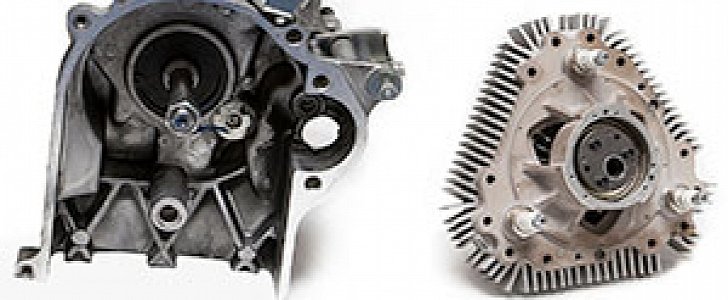For most of us, rotary engines are synonymous with Mazda's RX sports cars, and that's because Wankle's way of turning fuel into power didn't really catch on in the automotive industry.
Despite the many benefits it brings (compact size, lower weight, high rpm, beautiful sound, fewer moving parts), there were plenty of reasons why it didn't break through: low reliability, high fuel consumption and emissions. Mazda insisted on reducing the severity of these drawbacks, but its success was limited, and the RX cars remain the oddballs among its lineup.
A company led by Alec Shkolnik has been working on a new interpretation of the old rotary motor design, and after a dozen or so years of research and experimentation, LiquidPiston is ready to show the world what it's been working on. Funnily enough, its engine has no pistons, and it definitely isn't liquid, but misleading name aside, this new solution could give rotary engines a new lease of life.
"It’s kind of a Wankel flipped inside out, a design that solves the old problems with sealing and fuel consumption,” Alec Shkolnik tells Spectrum IEEE. “The Wankel has a triangular rotor inside a peanut-shaped housing; we have a peanut-shaped rotor inside a triangular housing. Our seals go at the apexes of the triangle [...] and our seals are stationary because they’re in the housing.”
The team swapped a go-kart's 40 lb (18 kg) engine with their 4 lb and three to five horsepower rotary variant, and it worked. It may not have broken any speed records, but considering this is an engine that fits in your palm, the achievement is remarkable.
The simplicity of the engine is astounding, as are its tiny dimensions and the excellent power-to-weight ratio. However, don't start rubbing your hands in excitement just yet, because you won't see anything like it in a conventional car too soon.
“Many people immediately try to sell improved engines to the automotive and truck market, and I can’t blame them, it’s a $300 billion market,” explains Shkolnik. “But to bring a new engine to life in the automotive world takes at least seven years and costs, quite literally, $500 million—and that’s for a piston engine, where the risk is low.”
Power a car it might not, but that doesn't mean it couldn't still be of use to one. Just imagine the benefits of using it as a range extender, where its weight and compactness would have minimum impact on the EV's performance. Alternatively, LiquidPiston's rotary engine would make for a great solution in aviation, which is probably why DARPA is very interested in its development.
A company led by Alec Shkolnik has been working on a new interpretation of the old rotary motor design, and after a dozen or so years of research and experimentation, LiquidPiston is ready to show the world what it's been working on. Funnily enough, its engine has no pistons, and it definitely isn't liquid, but misleading name aside, this new solution could give rotary engines a new lease of life.
"It’s kind of a Wankel flipped inside out, a design that solves the old problems with sealing and fuel consumption,” Alec Shkolnik tells Spectrum IEEE. “The Wankel has a triangular rotor inside a peanut-shaped housing; we have a peanut-shaped rotor inside a triangular housing. Our seals go at the apexes of the triangle [...] and our seals are stationary because they’re in the housing.”
The team swapped a go-kart's 40 lb (18 kg) engine with their 4 lb and three to five horsepower rotary variant, and it worked. It may not have broken any speed records, but considering this is an engine that fits in your palm, the achievement is remarkable.
The simplicity of the engine is astounding, as are its tiny dimensions and the excellent power-to-weight ratio. However, don't start rubbing your hands in excitement just yet, because you won't see anything like it in a conventional car too soon.
“Many people immediately try to sell improved engines to the automotive and truck market, and I can’t blame them, it’s a $300 billion market,” explains Shkolnik. “But to bring a new engine to life in the automotive world takes at least seven years and costs, quite literally, $500 million—and that’s for a piston engine, where the risk is low.”
Power a car it might not, but that doesn't mean it couldn't still be of use to one. Just imagine the benefits of using it as a range extender, where its weight and compactness would have minimum impact on the EV's performance. Alternatively, LiquidPiston's rotary engine would make for a great solution in aviation, which is probably why DARPA is very interested in its development.

